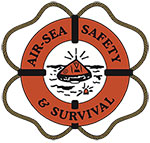35+ years of unsurpassed quality and service
Air-Sea Safety services all EPIRBs, PLBs and SART devices in house. We offer battery replacement, hydrostatic release replacement, reprogramming and signal verification. With our state-of-the-art signal testing instrument, Air-Sea can ensure your beacon is functioning properly.
Air-Sea holds class approval certifcates for shore based maintenance of EPIRBs and SARTs.
The COSPAS-SARSAT Search & Rescue System
- Distressed mariner/outdoor adventurer activates EPIRB or PLB-EPIRB
- Beacon transmits a 406 MHz emergency message containing your Unique Identifier Number (UIN) to the LEOSTAR (polar orbiting) and GEOSTAR* (geostationary) satellite systems
- The satellite relays the 406 MHz emergency message to a ground station called the Local User Terminal (LUT). The LUT calculates the location of the signal by measuring the Doppler shift caused by the relative movement between the satellite and the beacon and forwards the location to the Mission Control Center (MCC)

- The MCC continues to receive information from additional satellite passes and further refines the beacon position (2.3 nm search radius). An alert message is generated that is combined with the registration information from the database and is forwarded to the appropriate Rescue Coordination Center (RCC).
- The RCC contacts the persons listed in the database to verify the existence of an emergency and gathers additional information about the beacon users. The RCC will dispatch the closest, capable Search and Rescue (SAR) forces.
- Local SAR forces launch a rescue mission and use the 121.5 and/or 406 MHz homing signal to pinpoint the beacon.
Request EPIRB / PLB Service
Class Approvals






